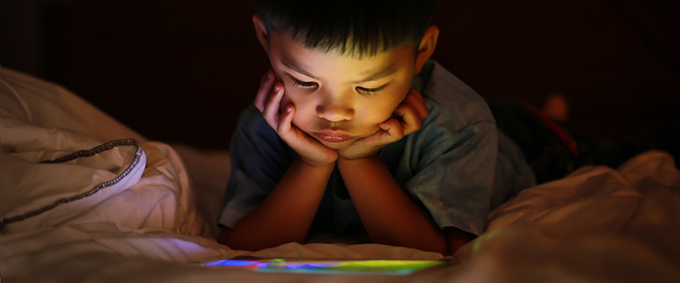
In the last decades, the different lifestyles at a global level have undergone great modifications. The daily time we spend sitting has increased exponentially , especially in Western and industrialized countries. The same happens with other similar sedentary behaviors, such as watching television and practicing leisure through devices with a screen.
These changes have gone hand in hand with an increase in the incidence and prevalence of obesity, cardiovascular diseases, cancer, diabetes and, in general, with more comorbidities, healthcare costs and premature mortality .
In fact, the number of overweight or obese five-year-olds is expected to reach 41 million by 2030 . This data is of special relevance because when the condition is established during childhood, it is more likely to persist until the end of the individual’s life, compared to obesity acquired in adulthood .
With these figures, the promotion of active and healthy lifestyles in the general population, and especially in children, has become a priority of health and public health institutions.
Why is it important for children to play sports?
Remember that the practice of physical activity during childhood has multiple beneficial consequences. One of the most relevant is the secretion of neurotransmitters and hormones that promote intellectual and cognitive development.
During this process, new neurons are generated and the neural connections that exist between the brain areas related to memory and learning multiply and strengthen .
In reality, these mechanisms are a consequence of exercising regardless of age. But they become especially relevant during growth.
It is more prominent in this period because physical activity improves basic intellectual abilities such as emotional control, memory and the ability to adapt to different tasks and environments, which are essential for optimal integral development as individuals .
The arrival of screens, an obstacle to growth?
However, electronic devices and the screens of televisions, computers, tablets and mobile phones promote sedentary behaviors. In addition, they are linked to the higher incidence of emotional problems, such as anxiety, depression and lower self-control in children .
For this reason, in a recent study , carried out by a group of Spanish researchers of which I am part, we have analyzed the degree of exposure to screens of all kinds (televisions, computers, tablets, mobile phones and video games) of minors and their relationship with the practice of physical activity and rest. Additionally, we have also determined whether any of these behaviors influence your mental health.
In the first place, it was in relation to physical activity habits that we found the most controversial results. The data reflected that, the greater the practice of exercise, the more frequent the use of screens, especially during the weekend.
This association, especially strong in the subgroup of children, may be due to the fact that the use of devices with a screen is used at home as a positive reward or as a reinforcement for the performance of certain positive behaviors, such as playing sports.
In addition, it should also be noted that this research has revealed that Spanish children’s exposure to screens is much lower than that detected in other populations .
Does the use of screens make children’s rest worse?
On the other hand, in the population of Spanish boys and girls it was not detected that there was an association between the time spent at leisure using devices with a screen and the time spent resting at night.
This can be strange given that recent studies advised avoiding screens to facilitate rest . But it should be noted that this recommendation has been established based on minors who had screens in their room (that is, with free access and availability of these devices).
So it may be that the key to ensuring a good night’s sleep for children and teenagers is to avoid screens in their sleeping rooms.
In addition, the association between the use of screens and fewer hours of rest at night has its origin in a study in which the average use of devices with a screen was higher than 30 hours per week . But the average of use in childhood and adolescence in Spain is 15 hours a week. In other words, they spend, on average, just over two hours a day on leisure with devices with a screen.
In general, the lifestyle of Spanish minors, although it could be improved, falls within the health standards in terms of hours of rest at night and habits of physical activity .
Mental health
Finally, the study showed poorer results in variables related to nighttime rest habits and mental health: fewer hours of sleep, more incidence of behavioral problems, hyperactivity and problems with other children.
In particular, boys showed worse mental health outcomes than girls. This is consistent with the fact that, in the gender-differentiated analysis, boys showed greater exposure to screens than girls in all age groups studied. Although the difference between the sexes was reduced as the age of the participants advanced.
Specifically, children are more sensitive to the development of behavioral problems and hyperactivity , especially when they are younger (under seven years). However, no relationship was found between altered mental health and less physical activity.
Finally, after all the above, it is important to note that, although the offer of leisure with devices with a screen as a reward for positive behaviors or healthy habits such as, for example, practicing sports, can be a valid strategy, it is important to instill styles positive life skills in childhood with the rewards of promoting health and preventing disease as a fundamental purpose.
Author Bio: Assistant Professor of Physiotherapy at the University of León